Stanley gives us a photo of America’s future working class
From Costco, a children’s toolkit with a picture of exactly one child:
A closer look at the future member of America’s tool-using working class:
Full post, including commentsA posting every day; an interesting idea every three months…
From Costco, a children’s toolkit with a picture of exactly one child:
A closer look at the future member of America’s tool-using working class:
Full post, including commentsAs we celebrate National Pickle Day, let’s look at a 63-year-old Democrat who expects, absent dramatic birth control measures, to become pregnant and crave pickles and ice cream. In the video below, she discusses a first person possibility of being a customer for IVF and abortion care as well:
Julia Louis-Dreyfus has reached the age of a great-grandmother in most human societies, but imagines that she could get pregnant and give birth (the Guinness Book of World Records age for this feat is 59) and also that someone other than a gerontologist is interested in her reproductive system. (The post and video above originally a tweet on JL-D’s official X account, but apparently it was deleted or restricted so that only non-Deplorables/non-Garbage can see it.)
What’s the corresponding fantasy world for Republicans? Deporting undocumented criminals:
“There’s about 4.5 million who would be the first priority for that, people who’ve already committed crimes,” Johnson (R-La.) said Thursday. “They’re in the system now [for] shoplifting, or whatever it is … or [having] done things that are untoward or unlawful.”
This politician imagines that there is a country (or countries) out there, other than the U.S., that is dumb enough to take in 4.5 million folks who’ve been adjudicated criminals. Note that criminality is heritable, so if a country takes in a criminal it will be on track to have additional criminals in the future. (Also remember that nobody can agree on how many of the undocumented are currently enriching us with their presence: “Yale Study Finds Twice as Many Undocumented Immigrants as Previous Estimates” (2018); the estimate of 11 million seems to have been in use by mainstream media for 20+ years, even as the same publications report on floods of new arrivals.)
I think the 63-year-old’s fear of getting pregnant and not being able to secure abortion care might be more reasonable than the Republican expectation of being able to dump migrant criminals on some other nation!
So the good news is that the two parties will be back to governing soon, now that the election drama is mostly over. The bad news is that both parties seem to be living in fantasy worlds of their own creation!
In case the above Instagram post is memory-holed…
Full post, including commentsNo fewer than 3 out of 130 immediate neighbors have Taylor Swift themes for Halloween decor. Here’s the best one:
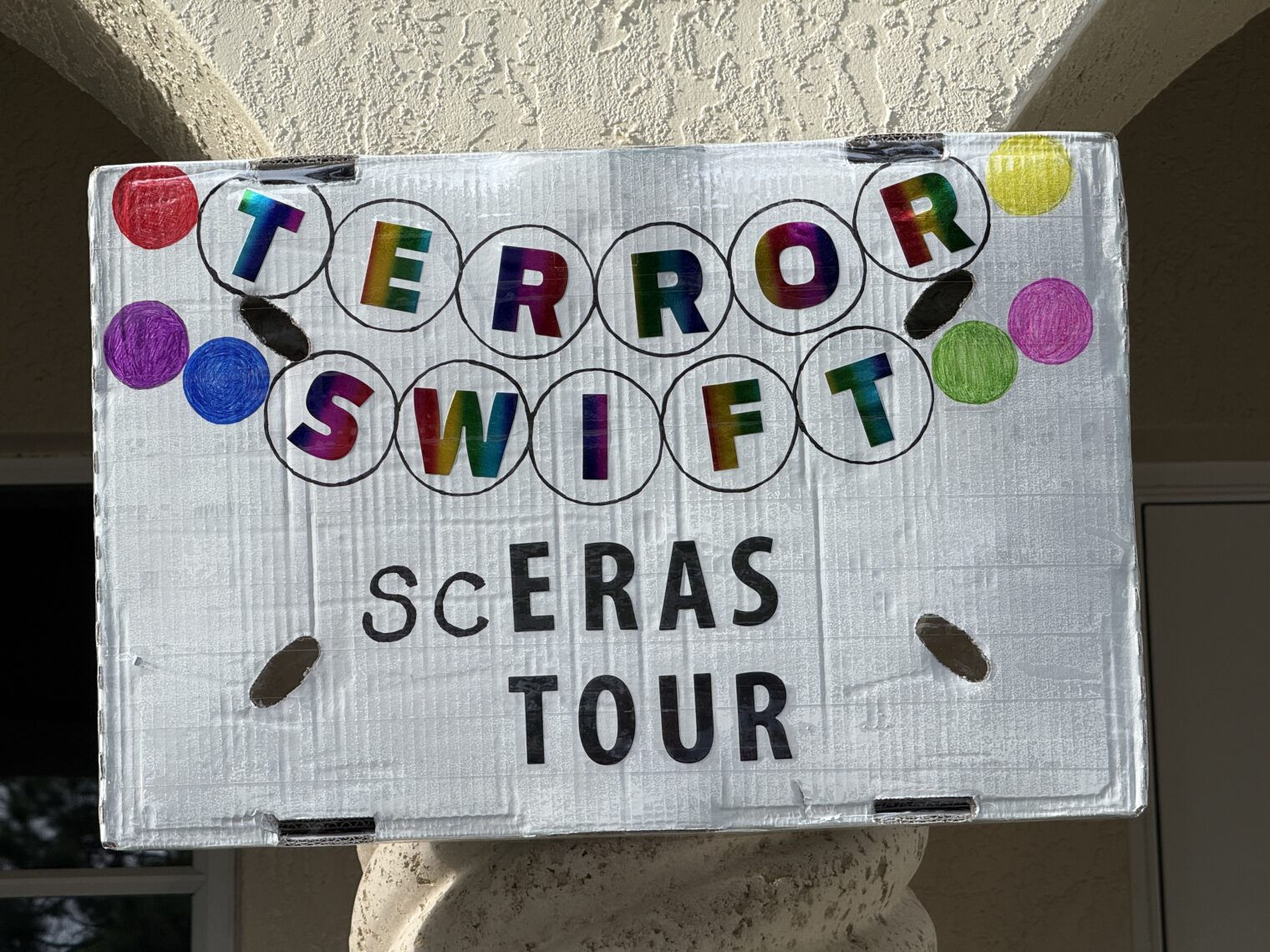
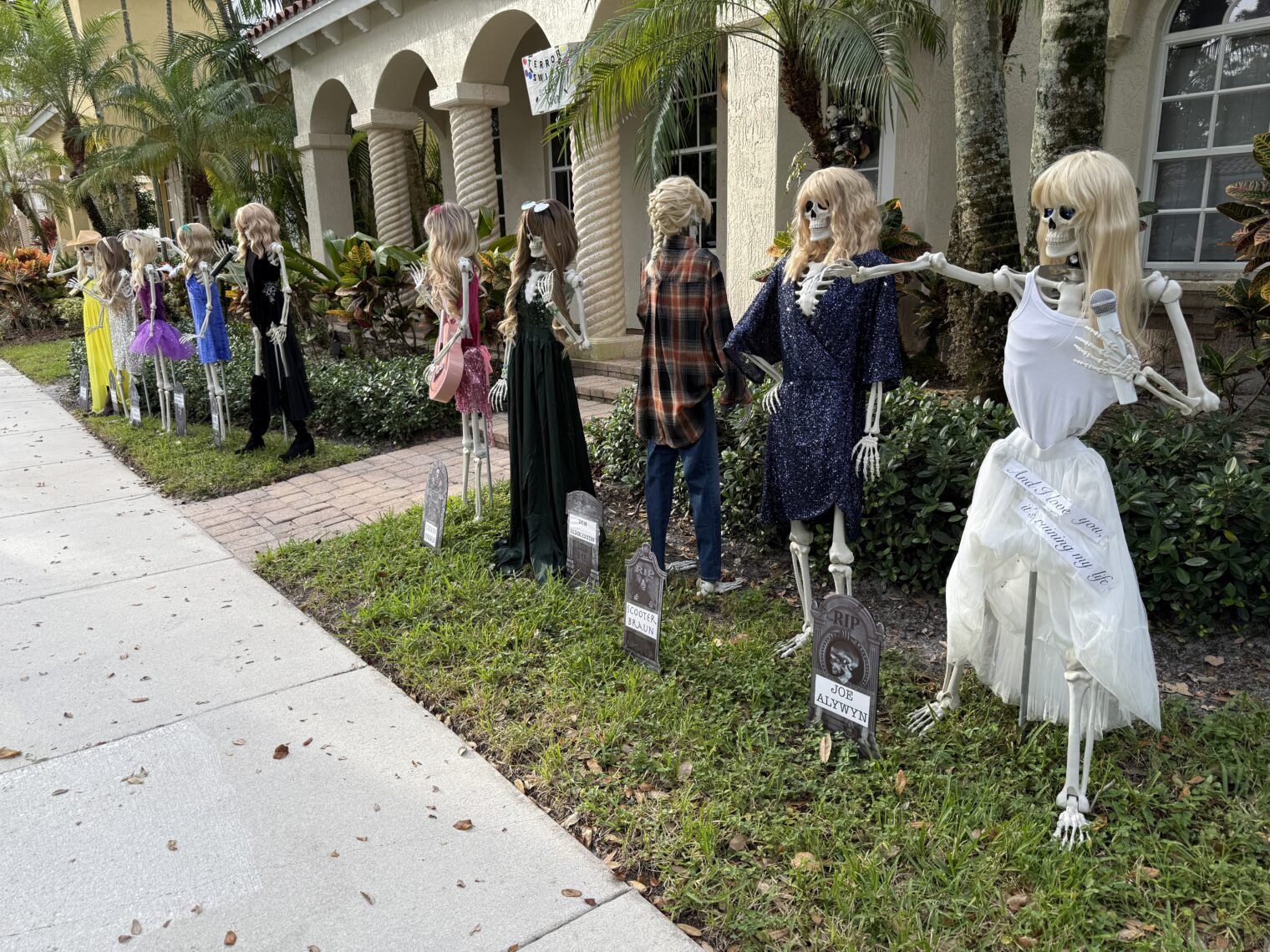
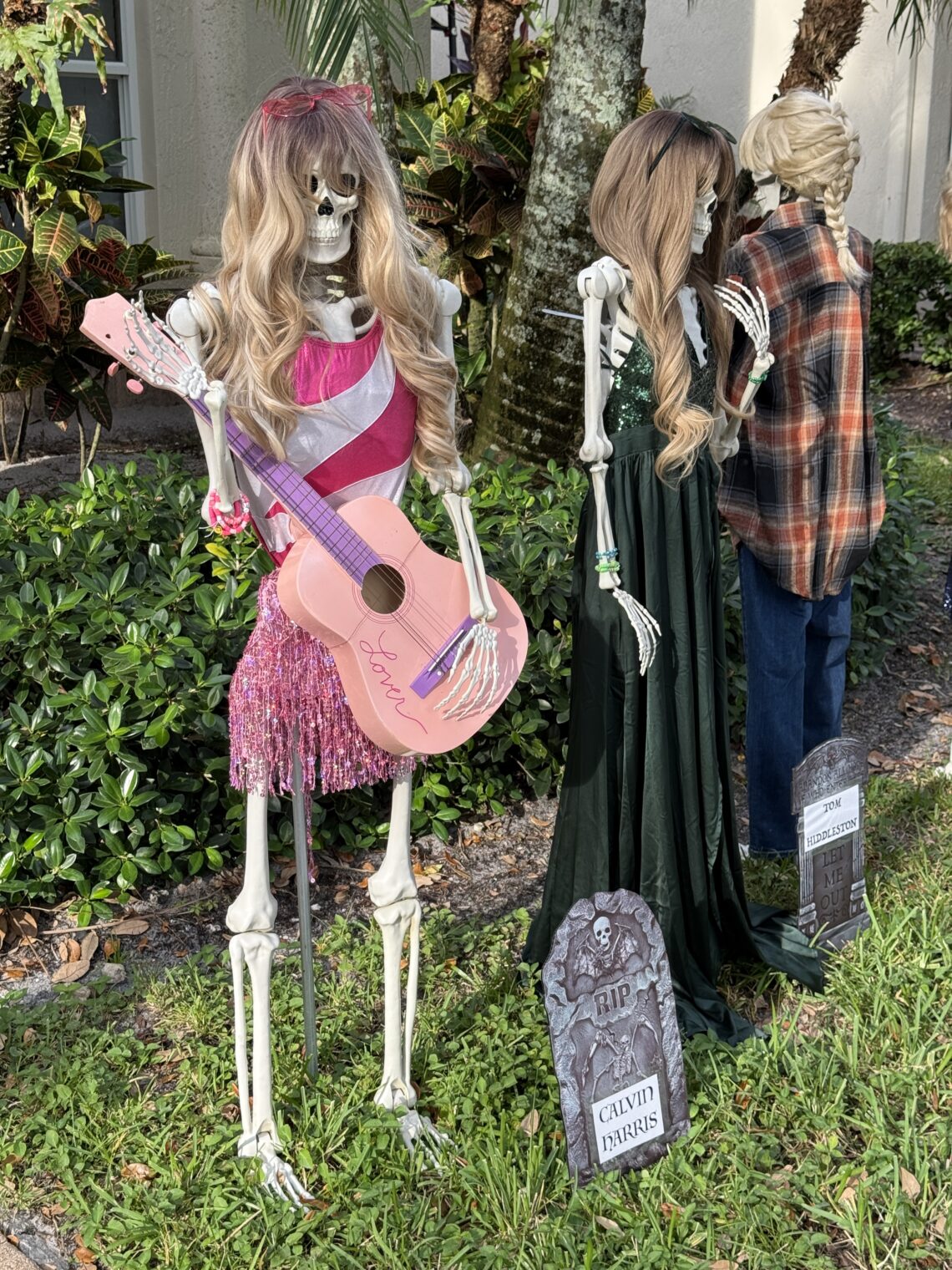
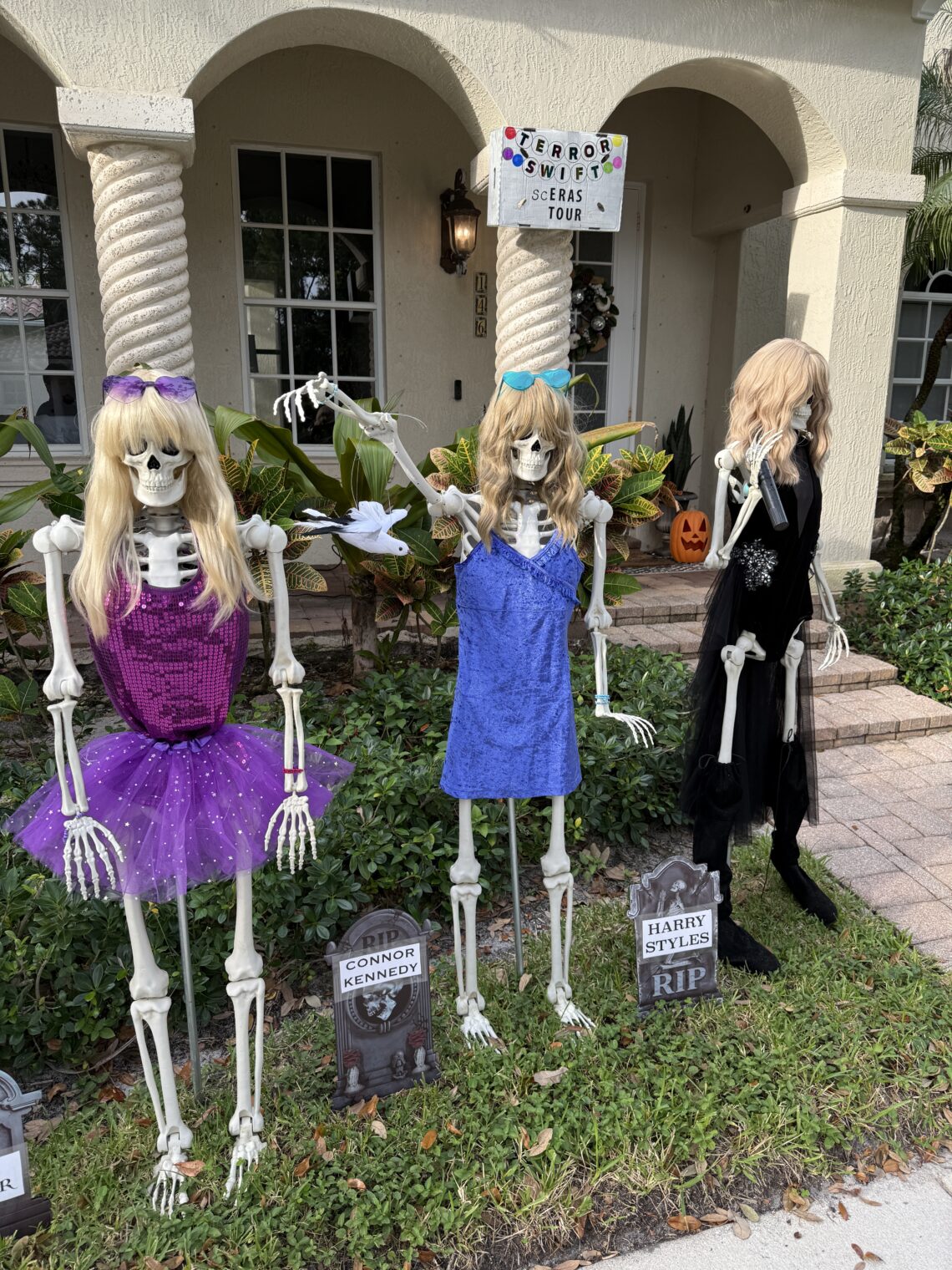
And on the other side of the sidewalk:
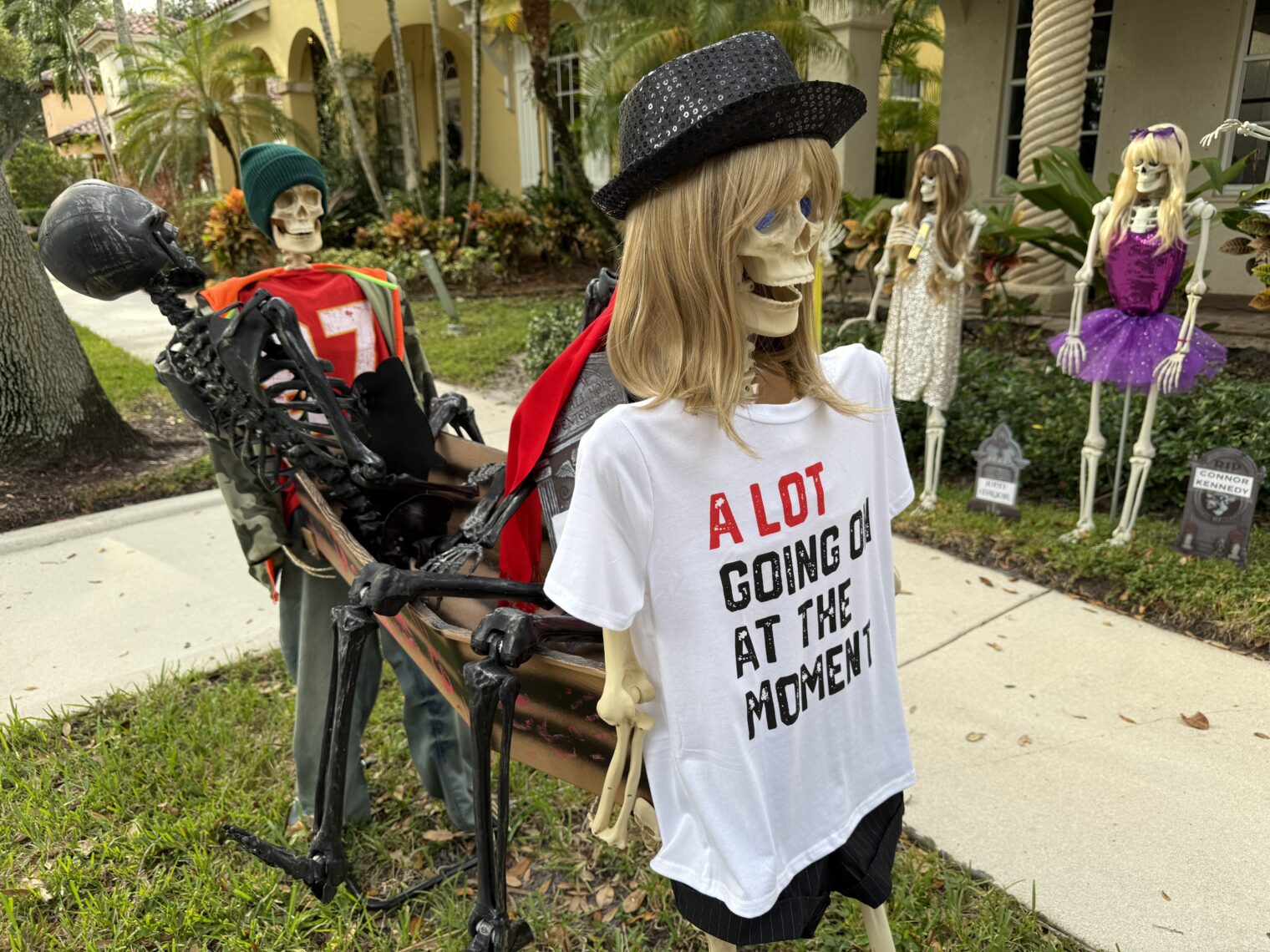
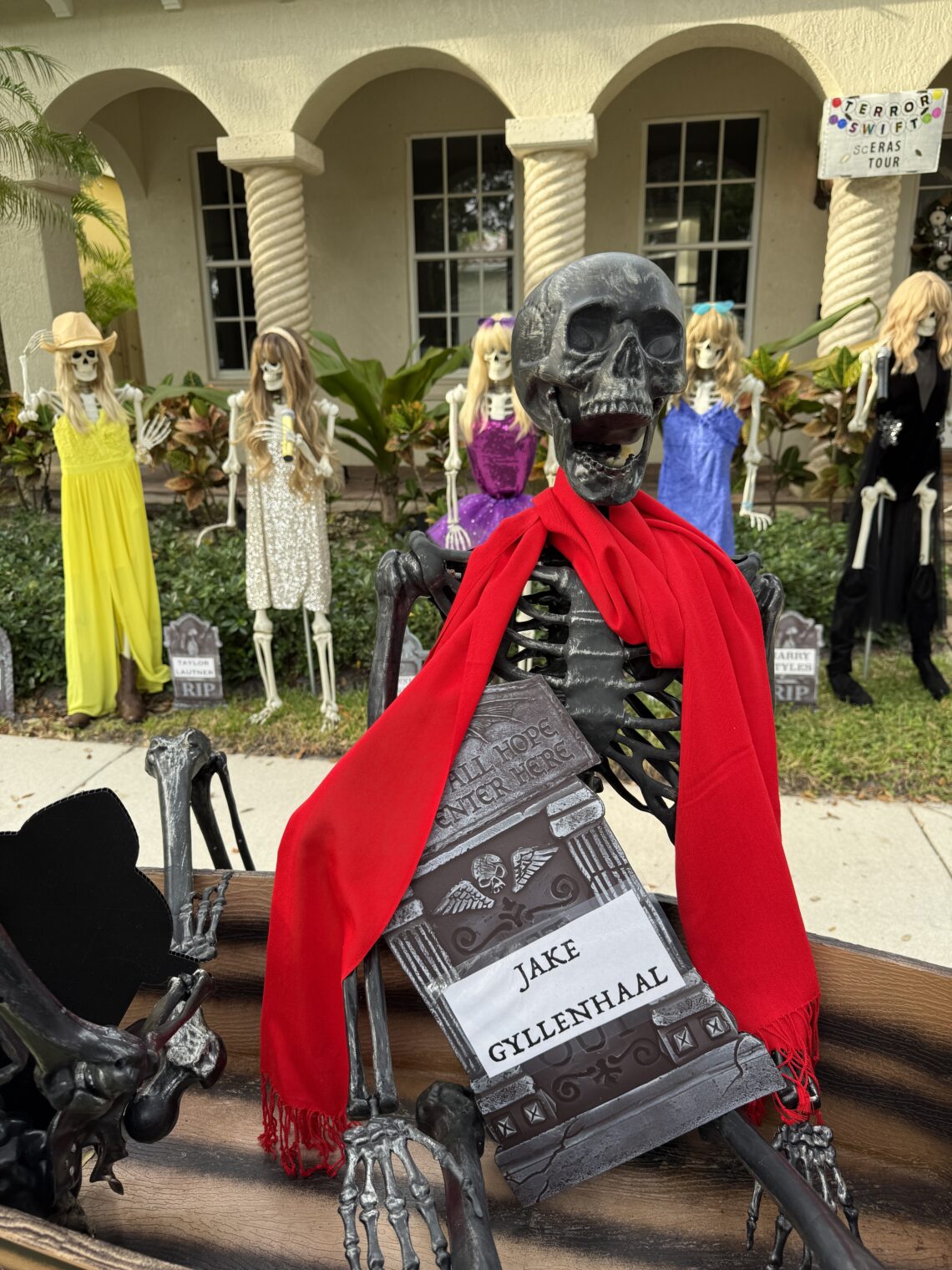
The nighttime view:
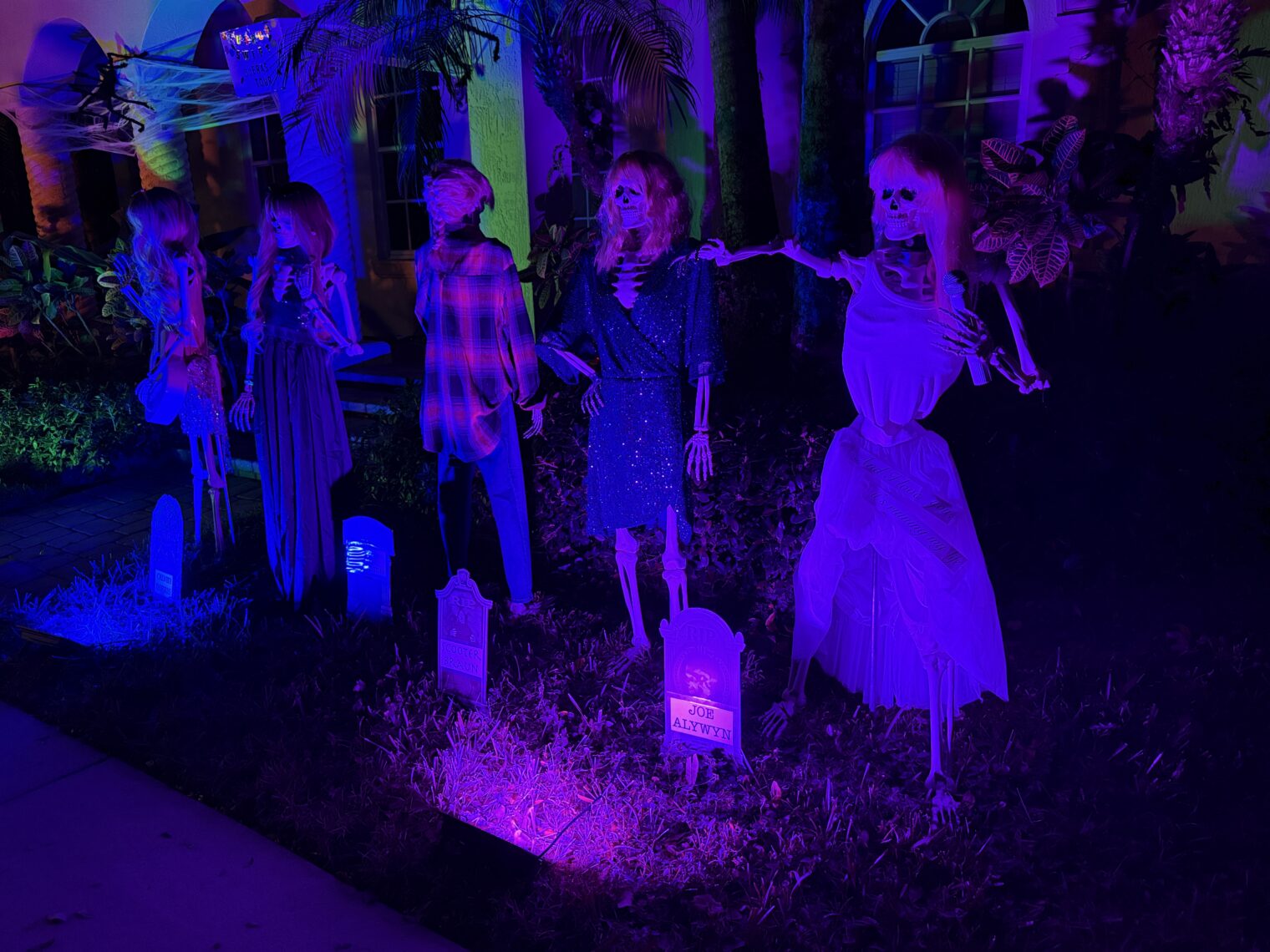

(I hate to brag, but the above photos were taken with my new iPhone 16 Pro Max. Nobody has a better phone than I do and nobody hates to brag more than I do.)
Speaking of night photos, a house with a headless horseperson of unknown gender ID and a dragon (also of unknown gender ID):
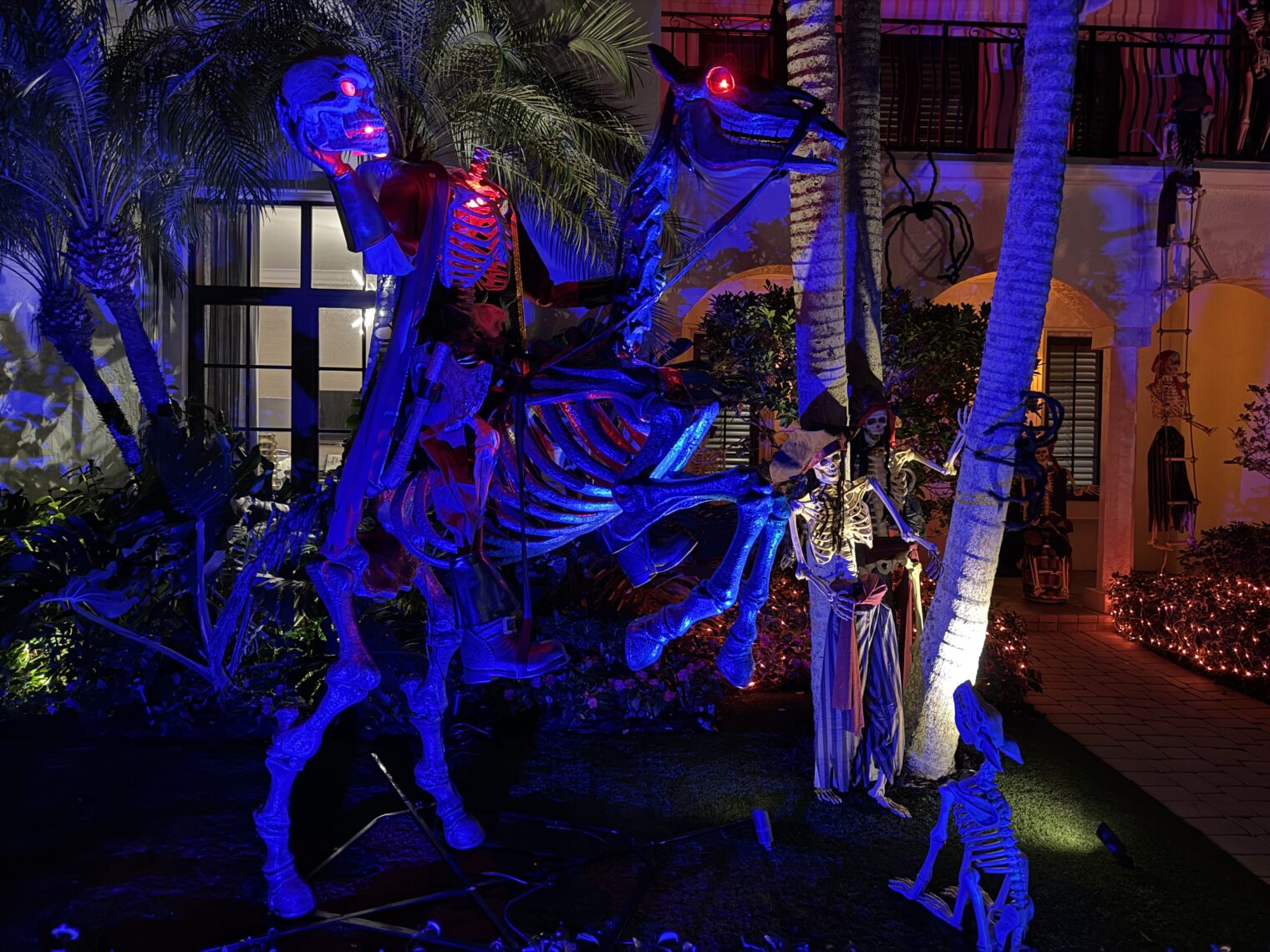

A generally scary look:
The grim reaper and three clowns don’t seem to hang together. Can anyone think of a unifying theme? The clowns are animatronic:
Women from an Islamic society?
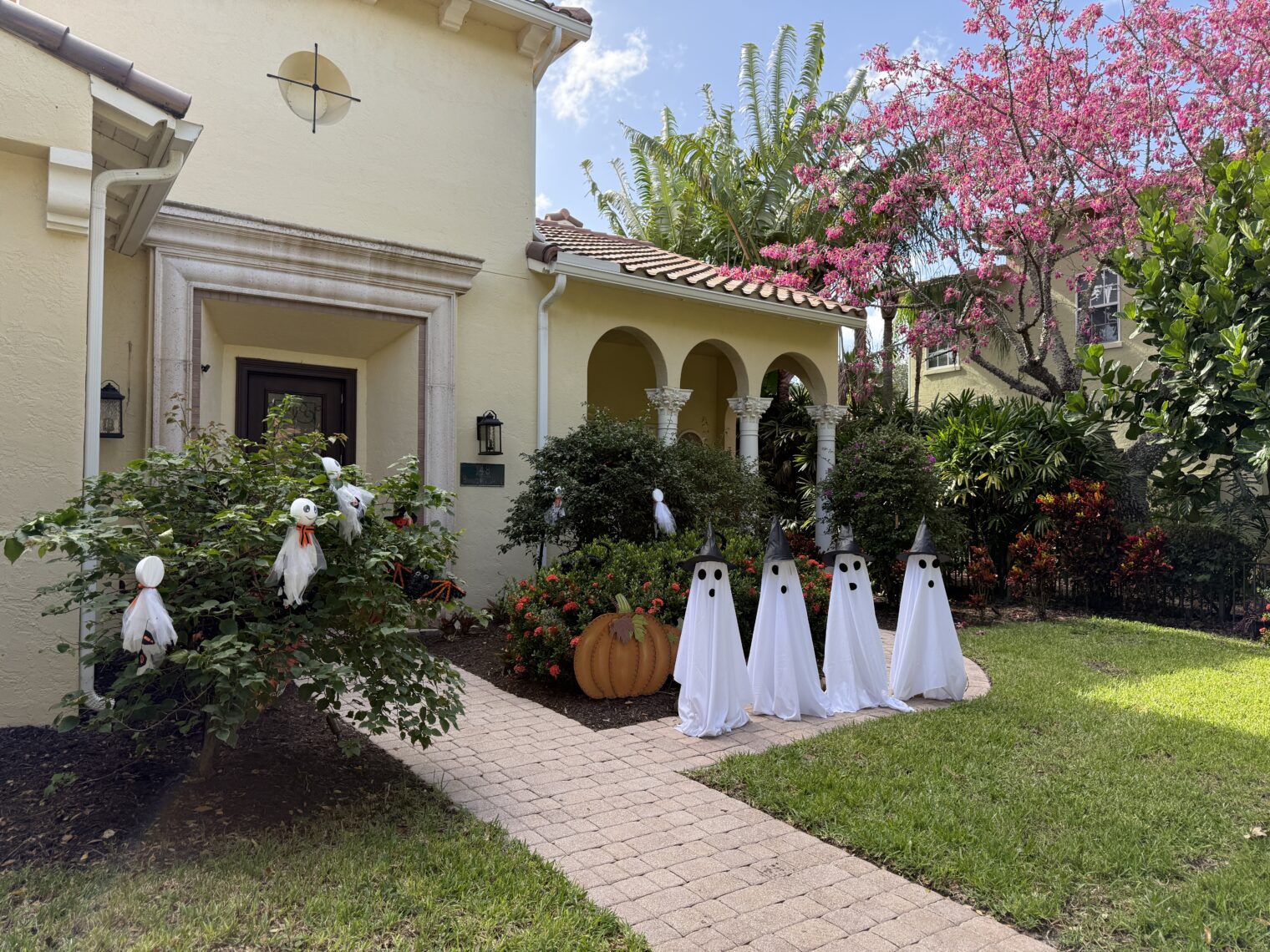

A neighbor with preschoolers has put an extra stroller to good use:
Try not to schedule your birthday for any time near Halloween… the scene from last weekend:
Go Big or Go Home:
Folks in the adjacent non-HOA Jupiter Heights community are famous for their Christmas displays, but they had a few fun Halloween houses:

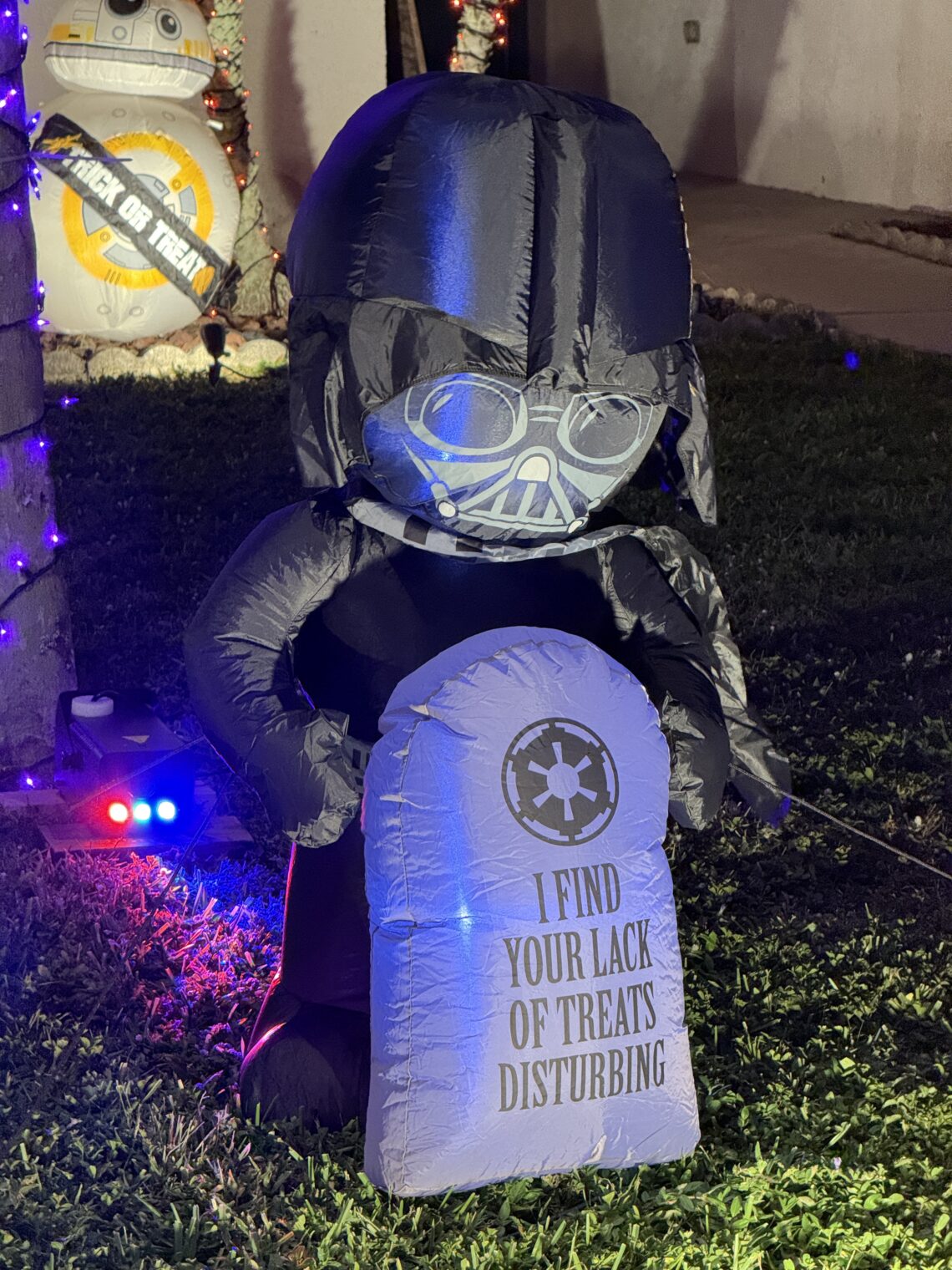
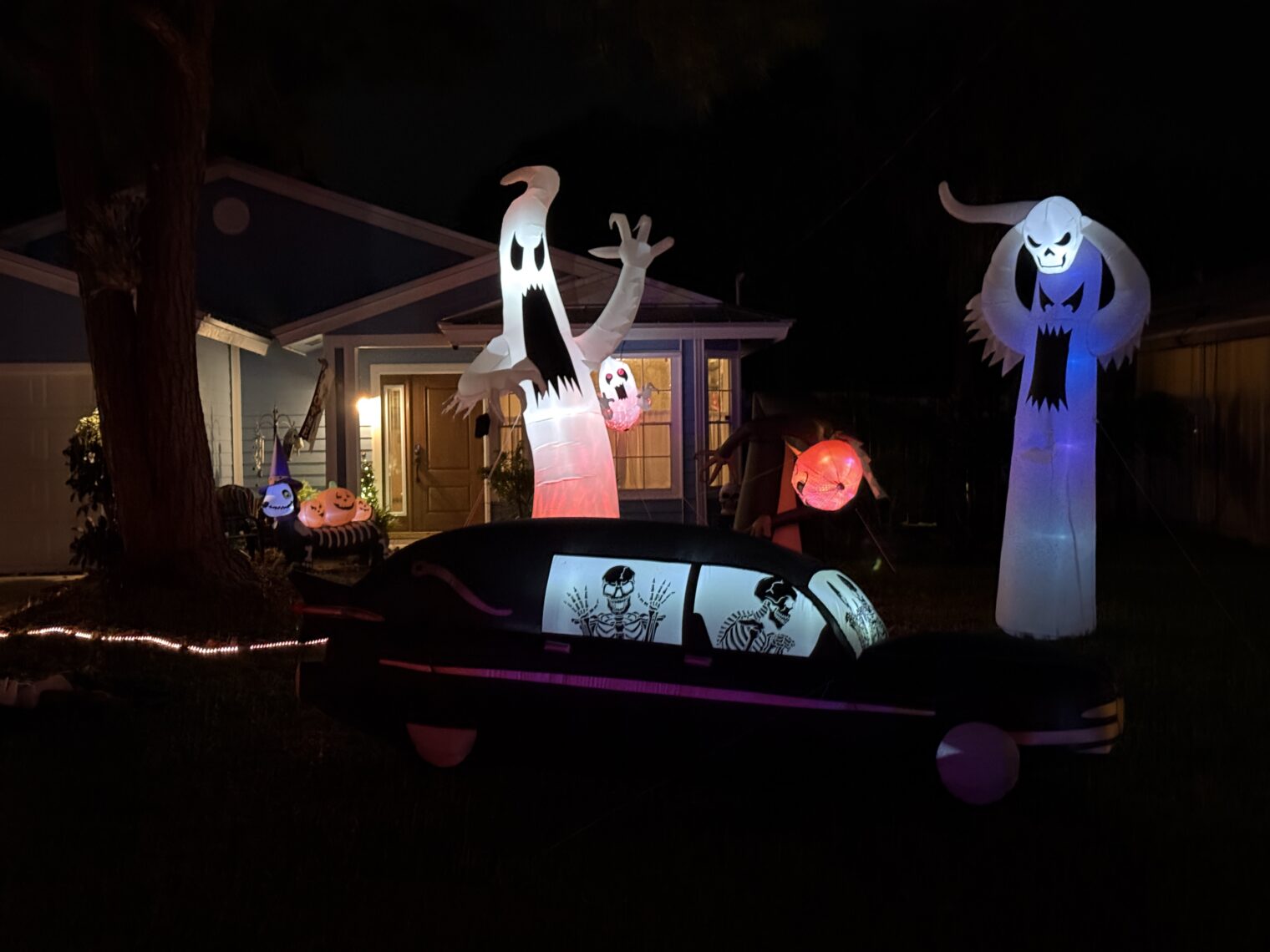

I would love to see Jabba the Hutt as the advertising mascot for an Ozempic-style medicine.
Full post, including commentsA Jeep in Fort Worth, Texas:
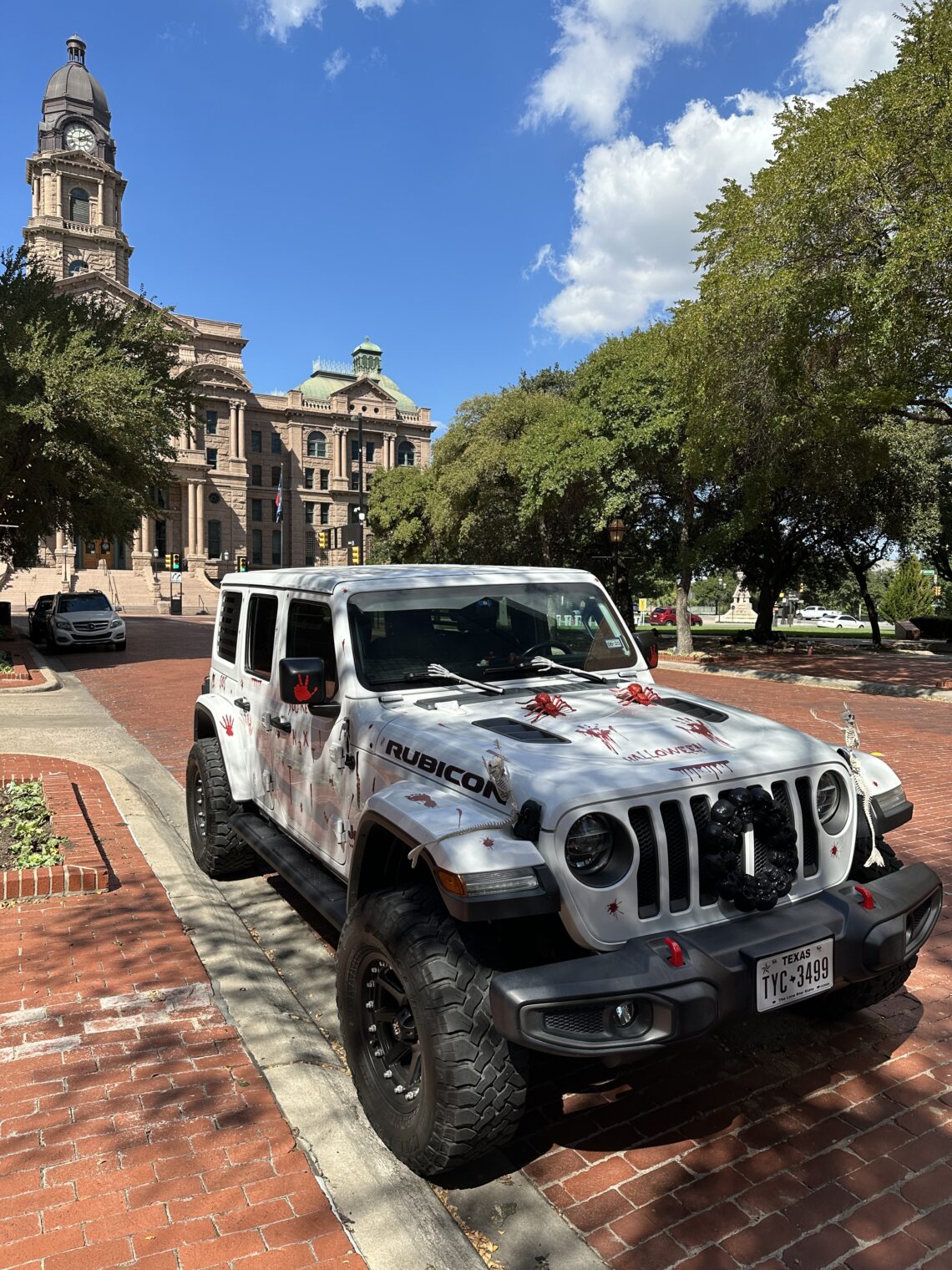
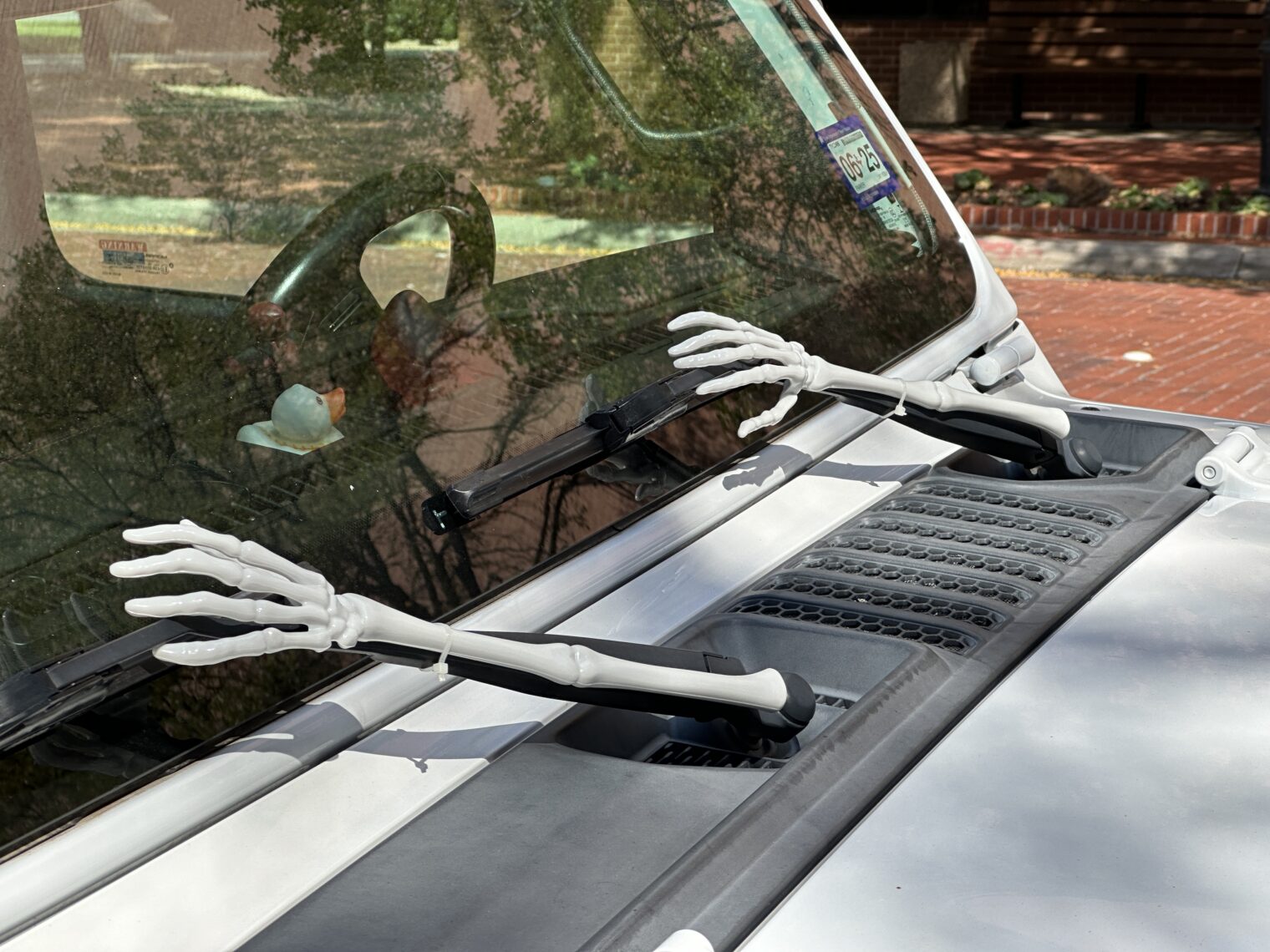
This looks like a custom project that started with skeleton arms and hands.
Full post, including commentsI’m 61 today, a stereotypical age for a 1950s father to drop dead from a heart attack (that would have been attributed to the stresses of work, adult female supervision, concerns around children, etc.). This post is to reflect on things that I’ve learned in the past year.
From Fort Worth… it turns out that “Brazilian Sugar” is not a doughnut flavor:
From moving my 90-year-old mom out of independent living in Bethesda, Maryland to assisted living here in Jupiter, Florida… nothing in the United States is set up conveniently for old people. Financial services and government agencies require old people people to be competent with smartphones and/or web sites. Being an Internet/email user exposes old people to every kind of fraud (much worse since the lockdowns because old people have been more isolated and, therefore, easier to exploit). We need new structures, such as banking, credit card, and brokerage accounts that can be set up so that a second person’s authorization is required for transactions above a certain size.
From being almost at the end of Year 2 of ChatGPT… LLMs aren’t useful yet for making daily life go more smoothly. LLMs haven’t reduced traffic jams in the U.S. or airline delays and cancellations. LLMs haven’t made it easier to prepare dinner or clean up the house. Maybe LLMs are a game-changer for students assigned to write essays and programmers assigned to write boring code (especially on new-to-them platforms; maybe this explains “Tech Jobs Have Dried Up—and Aren’t Coming Back Soon” (WSJ)), but they haven’t meaningfully touched even a lot of enterprises that are primarily about information processing. For example, I’m an expert witness in an avionics-related case right now. There are more than 25 lawyers and paralegals on each side. Much of what is being done is, in theory, the kind of work that an LLM could do well, e.g., find a relevant document quickly, assemble relevant case law for a dispute that the judge has to settle, etc. Yet no use of LLMs is made at trial.
From Tequesta Indian Village Peace Mound Park, a bit of high ground in the otherwise uninhabitable Everglades that was inhabited prior to the Europeans draining the swamp… a parent was done with his/her/zir/their job when a child turned 13 and heaven was a swamp:
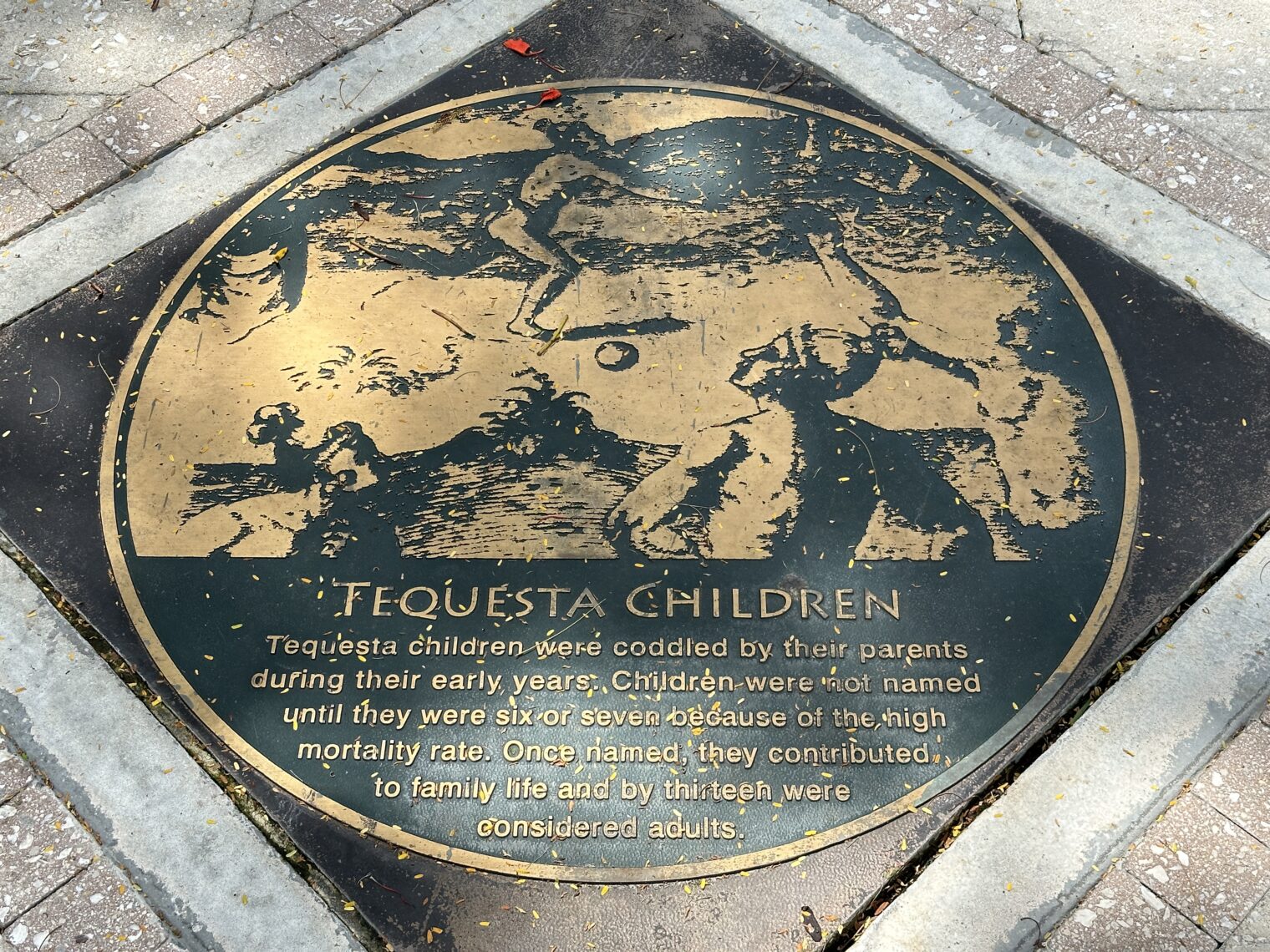
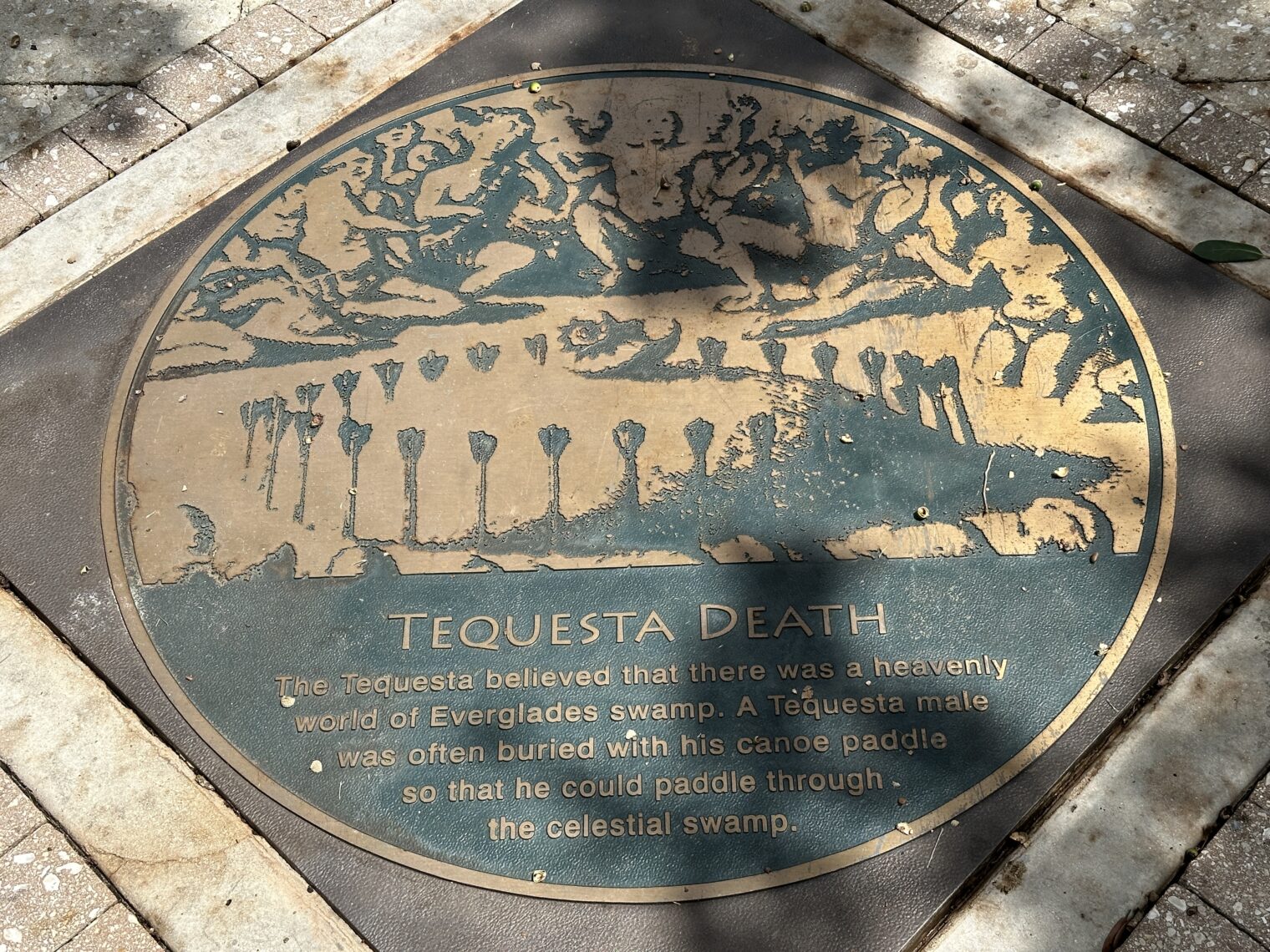
A few things that I’m glad to have done during the year…
How am I spending the day? Sadly, there won’t be the kind of theme party that Talulah Riley organized for Elon Musk (source):
For his forty-second birthday, in June 2013, Talulah [Riley] rented an ersatz castle in Tarrytown, New York, just north of New York City, and invited forty friends. The theme this time was Japanese steampunk, and Musk and the other men were dressed as samurai warriors. There was a performance of Gilbert and Sullivan’s The Mikado, which had been rewritten slightly to feature Musk as the Japanese emperor, and a demonstration by a knife-thrower.
The morning was spent in a 20-year-old Cirrus SR20 with no air conditioning and an intermittent ALT1 failure (a problem that three different Cirrus Service Centers haven’t been able to resolve in nearly two years; this was the first failure after a mid-summer circuit breaker replacement). My 9-year-old copilot suggested Chick-fil-A for lunch. Then we visited my mom. Exciting plans for the rest of the day: Zoom for an expert witness matter; dinner near PBI; pick up the kids’ other grandma at PBI; cake with my mom in her senior fortress.
Full post, including commentsI hope that everyone has fully prepared for National Hispanic Heritage Month, which starts today.
Friend’s daughter at the Boston Museum of Science: “Why are all of the signs in Spanish when everyone here is white or Asian?”
From August 2021, when Marjorie Taylor Greene was suspended from Twitter for falsely saying that the vaccinated righteous could still be infected by SARS-CoV-2 and transmit the virus (CBS), “Museum of Science, Boston Announces Vaccination Mandate for All Staff, Volunteers”:
The Museum of Science, Boston, one of the world’s largest science centers and New England’s most attended cultural institution, announced today a requirement that all employees and volunteers are to be vaccinated against COVID-19, effective September 13. The policy is in response to overwhelming scientific evidence of the vaccination’s safety and effectiveness in combating COVID-19.
Museum president Tim Ritchie spoke about the importance of the Museum setting an example as a trusted community resource:
“In early 2020, we closed our doors because the world was fighting a pandemic about which we had little knowledge and against which we had limited defense. Now, thanks to the wonders of science, we have the tools and expertise to eradicate this virus from our communities. We just need to act together.
Also… “Pride Celebration Weekend” at the museum for kids:
Full post, including commentsWe’re right in the middle of National Anti-Boredom Month. If you have a family of four and want to escape into interesting air-conditioned spaces it will probably cost you at least $100 per day. Unless…
A young friend who lives in the Boston area had a period of unemployment after finishing a degree and before moving to another city. She signed up for what used to be called “food stamps” (now SNAP) and received an EBT card. The expectation of what used to be called the “welfare system” is that an American will stay on it for the rest of his/her/zir/their life. Therefore, the card has no expiration date. “I haven’t been on SNAP for years,” she said, “but I still keep the card because it gets me into almost every museum for free.”
From my July 2022 post Why you want to be on SNAP/EBT:

Related:
Below are some photos of Vilarinho das Furnas Dam, a 310′-high concrete arch dam on the Rio Homen in northern Portugal. People are trusted to walk across the dam, drive across the dam, etc. 24/7. We didn’t notice any gates, security personnel, etc. after walking down from Campo do Gerês.
Is there anything similar in the low-trust society that the U.S. has become? The Hoover Dam is heavily secured. This web page about some dams in Washington State details quite a few restrictions on some obscure dams:
Vehicles that can’t be easily searched aren’t allowed across. Nobody can go across after 5 pm. In a society that reveres the noble undocumented, without whom we would be impoverished, documents are demanded.
Photos of the Portuguese dam:
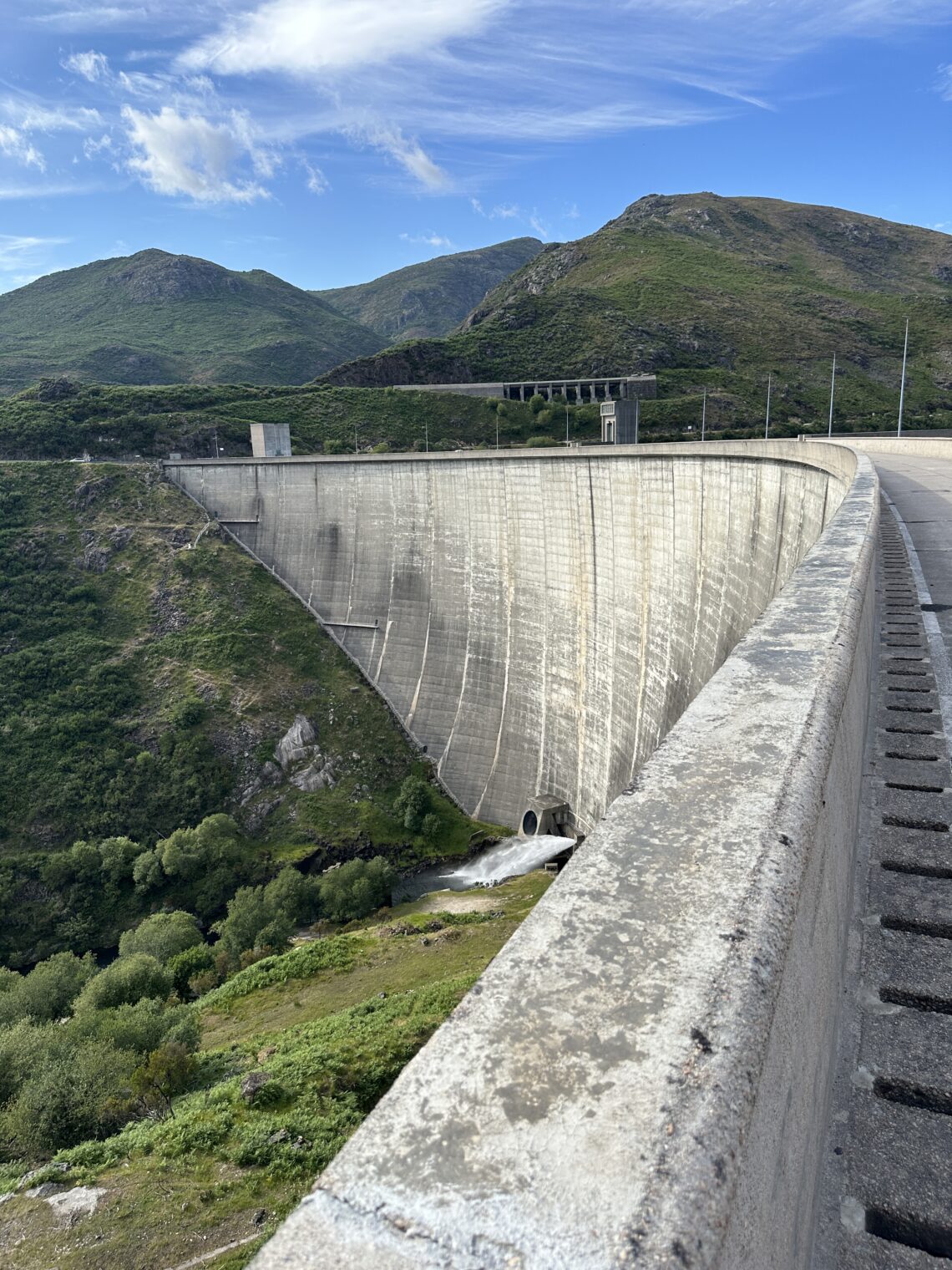
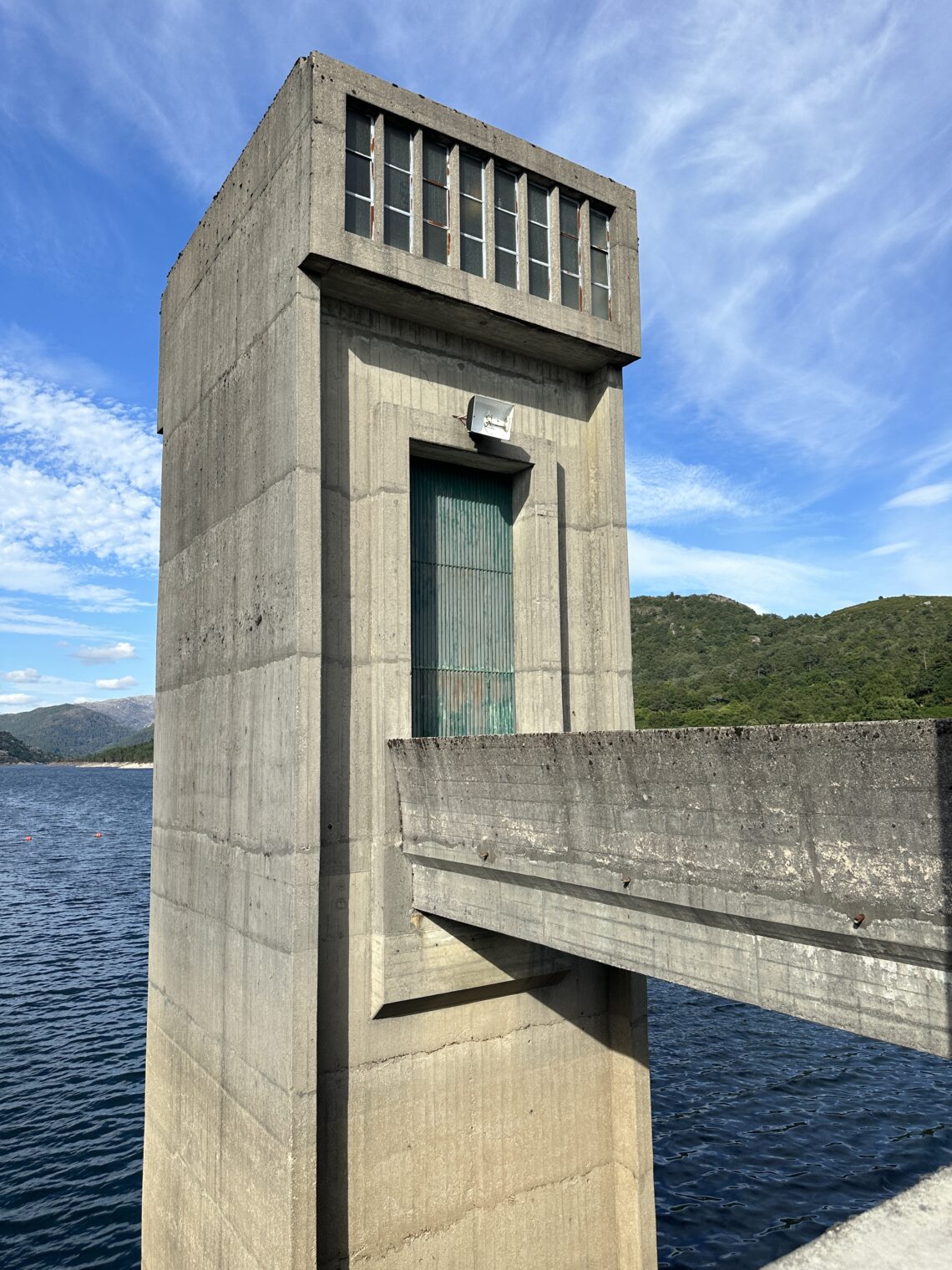
The reservoir that is impounded:

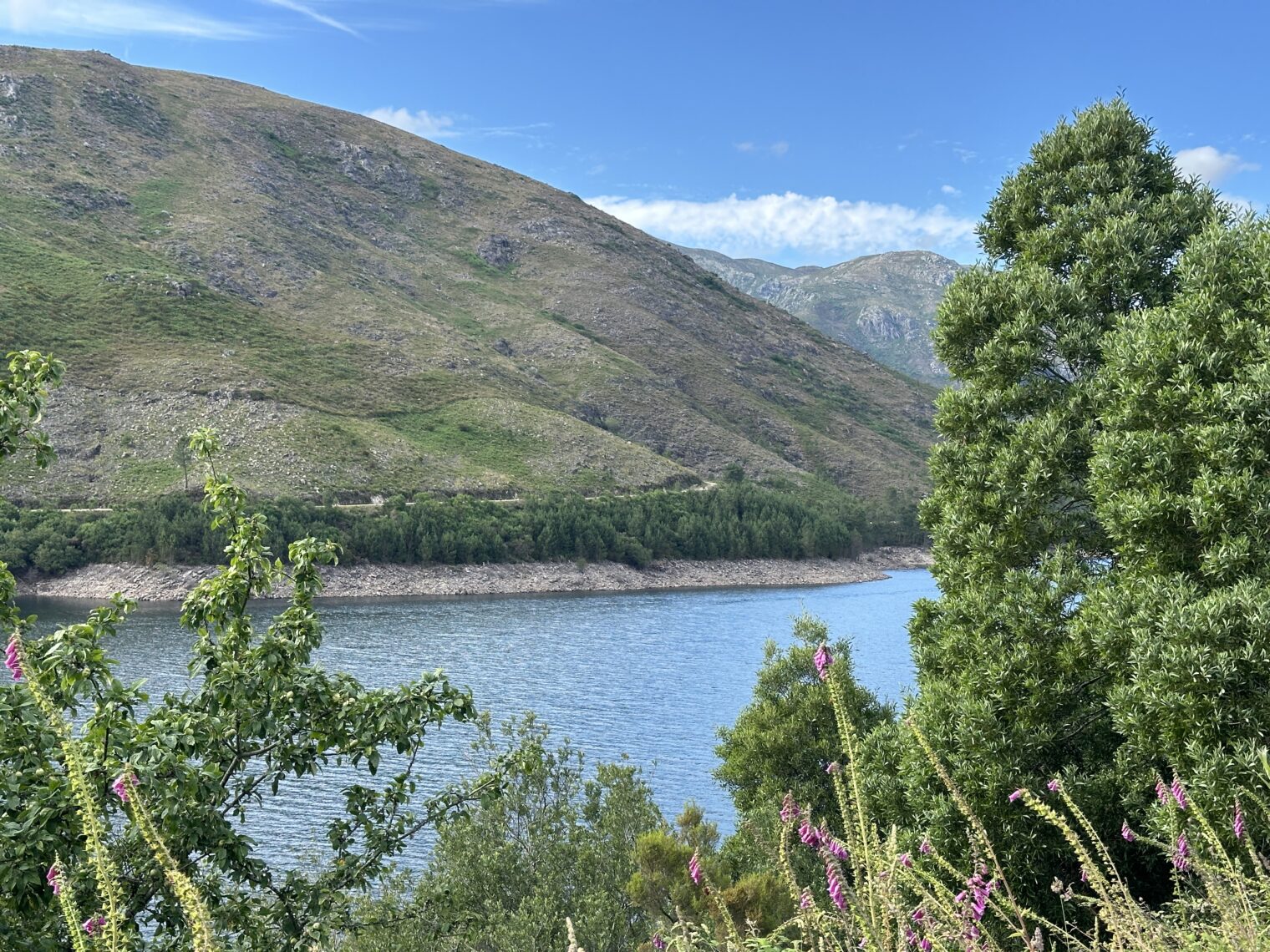
As noted in Where are the gardens and museums created by the Silicon Valley rich? we seem to be undersupplied with public physical infrastructure relative to the number of super rich Americans. Jeff Bezos was happy to spend about 400 million dollars recently on a sea-level house in Florida (bought three houses recently for a total of $234 million, but there will surely be some renovations), but there is no “Bezos Museum of Contemporary Art” nor a “Bezos Contemplation of Two-Day Delivery Garden”.
Maybe some of our multi-billionaire brothers, sisters, and binary-resisters will be more interested in a lasting physical legacy after their deaths. If so, here’s some inspiration from Lisbon…
The Marquis of Pombal was an important administrator tasked with cleaning up after the 1755 Lisbon earthquake (make sure to stop in the quake museum early in any touristic visit to Lisbon!). He was the Herbert Hoover of 1755, in other words (Hoover ably directed the clean-up after the Climate Change-caused Great Mississippi Flood of 1927, giving Americans for the first time the idea that a bigger government could be more powerful than Nature). Here’s how the Portuguese remember their hero:
(photographed from a 7th floor terrace in the Bankinter building.)
You might reasonably ask how a private citizen can get a town or city to devote a public square to his/her/zir/their memory. Answer: money! Chicago, for example, has $52 billion in unfunded public employee pension obligations (source). America’s richest could plug that hole and enable politicians to keep promising more lavish compensation for government workers. In exchange, a prime downtown location for a monument like the above. (They’d better set this up before the last billionaire departs for Florida!)
Let’s take a closer look at the Lisbon monument:
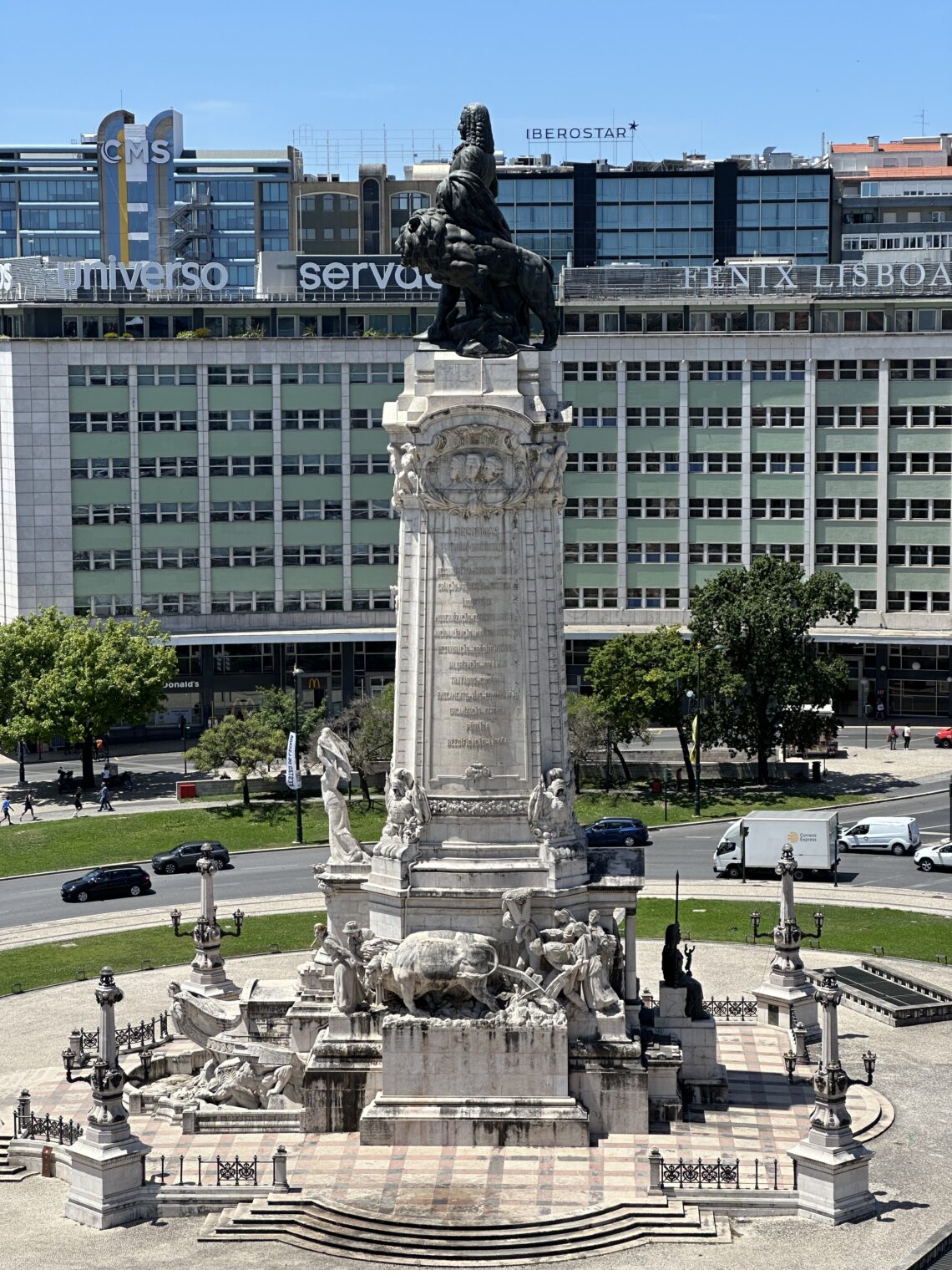
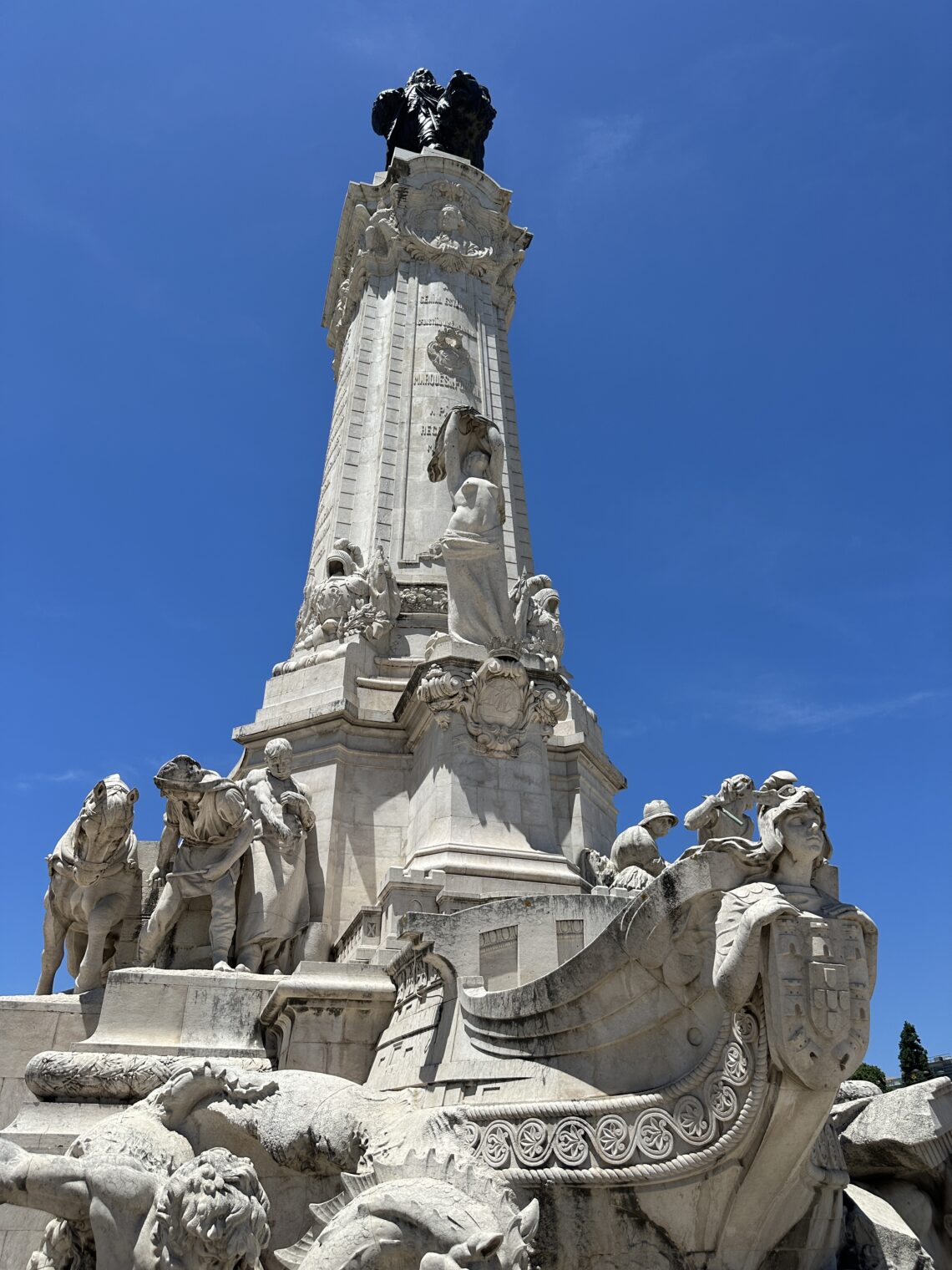
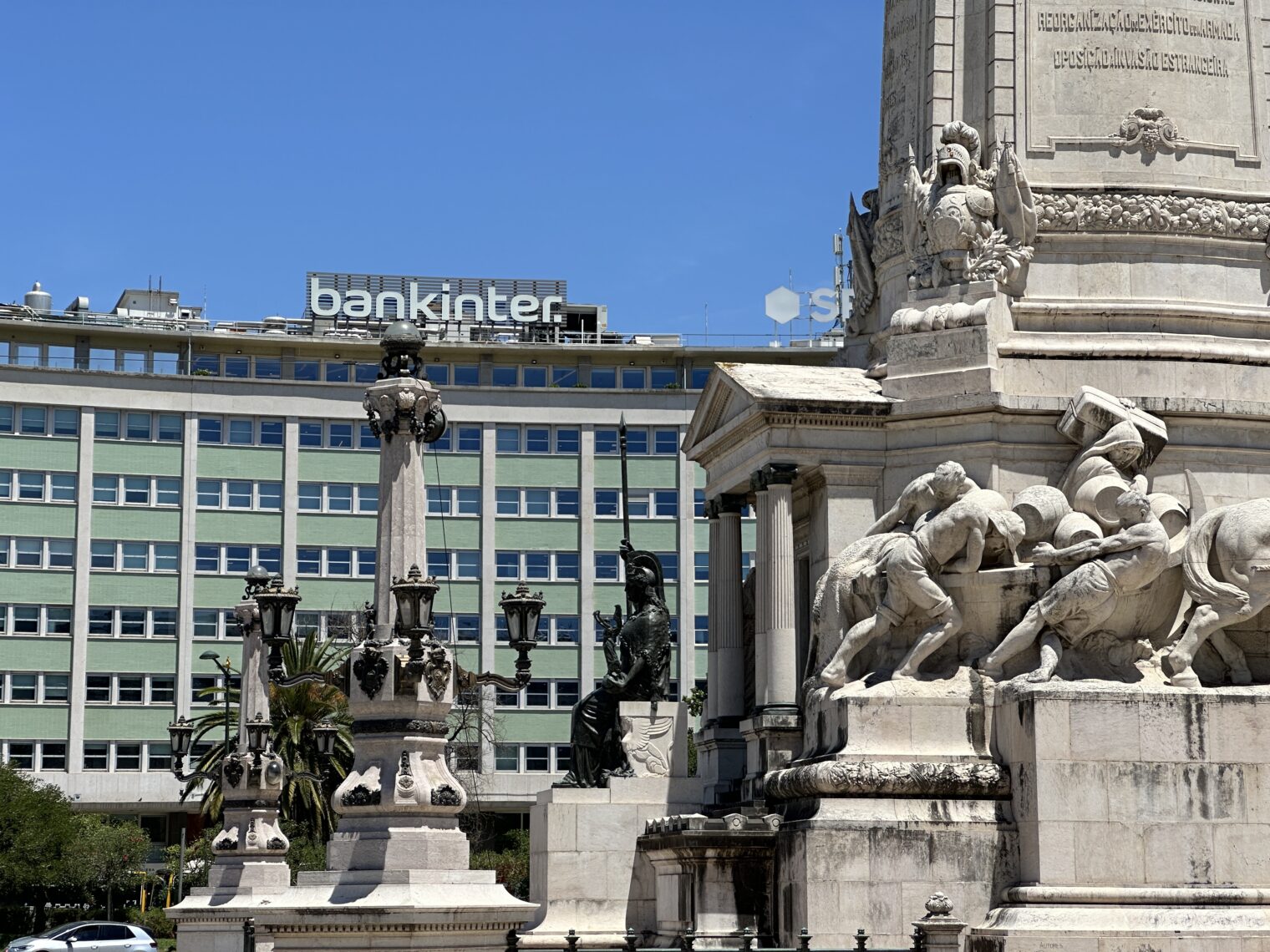
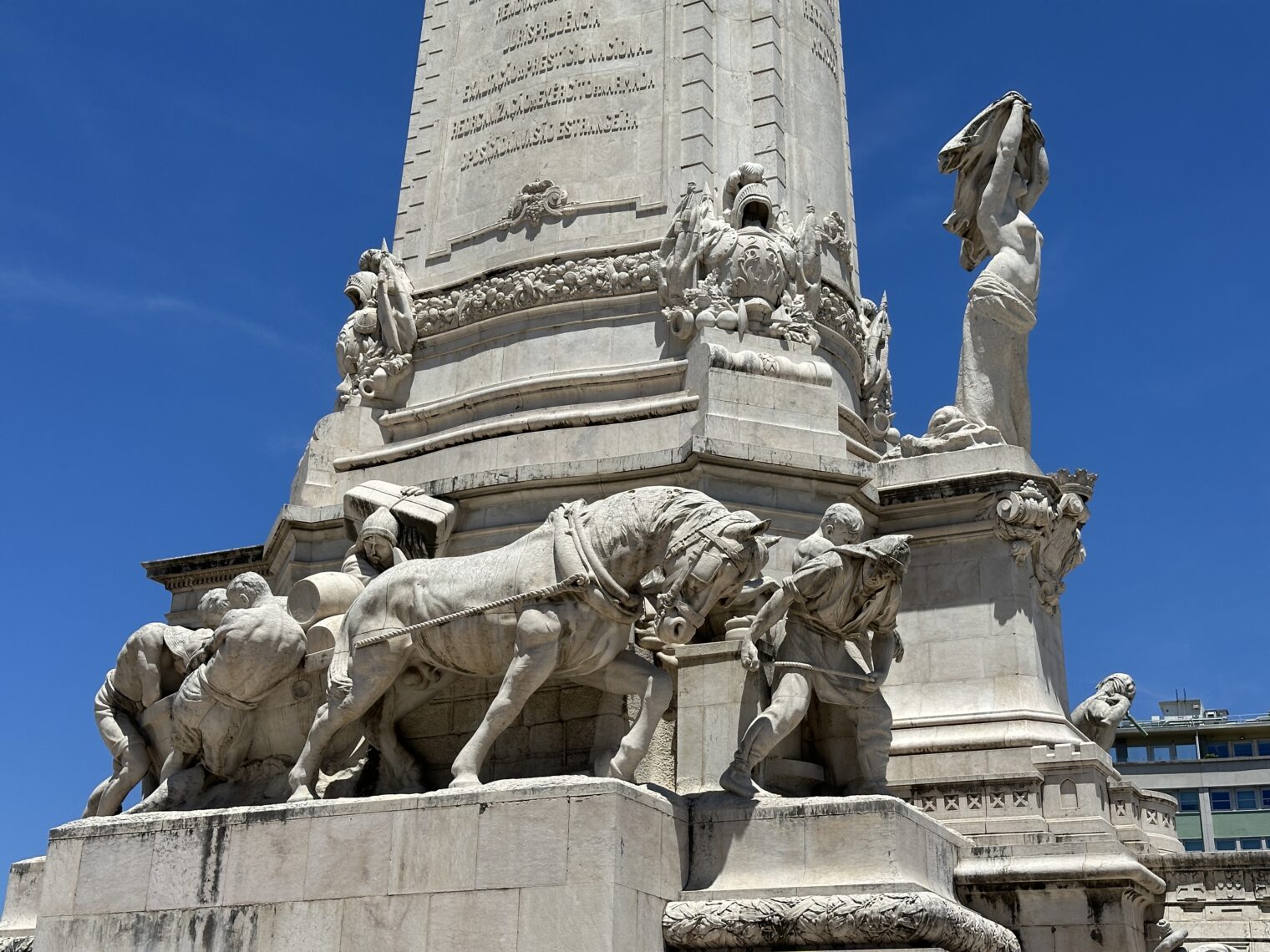
What would the monument depict for an American multi-billionaire? Why not the acts that led to the riches? For a Warren Buffett monument there could a scene where he closes the door on an IRS official hoping to collect some taxes (combination of business acquisition deferrals and insurance reserve). For Larry Ellison there could be a scene where the cover page of the IBM System R SQL manual is ripped off and replaced with an Oracle cover page. For Judith Faulkner it could be a doctor entranced and baffled by a computer screen while a patient languishes and dies. For those whose billions are derived from family court litigation, e.g., MacKenzie Scott (Bezos) or Melinda Gates, there could be a tally of every time that the billionaire engaged in a sex act with the defendant prior to initiating the divorce lawsuit, e.g.,
For private equity heroes, the monument would depict half of the workers being given pink slips while the other half are loaded down with 80 lbs. of debt per worker. Where I’m stuck is in figuring out what to put on the memorial for a Wall Street billionaire. What are the heroic acts that can be depicted for someone whose billions come from high-risk trades that proved lucky or smart daily trades?
New York State will need to collect about $16 billion per year in fees from billionaires in order to plug its structural budget deficit (source regarding the gap between what politicians promise and what they hope to collect). There are plenty of spots in Central Park in which a deceased billionaire could be glorified. California has more like a $50 billion gap between what politicians want to spend and what can be extracted from the peasants (source). How about a series of memorial parks along Sand Hill Road and another one down near LACMA?
Full post, including commentsHappy Father’s Day to those who celebrate.
Sunday is generally a sacred day of rest/family here in Portugal, but two dads teamed up to get our failed rental 2024 Mercedes E 300de back on the road. I hope that no fathers were implicated in the engineering of this useless machine. It’s a five-seat car that can barely hold luggage for two people because most of what should be the trunk is taken up by a hybrid battery (impossible for a rental customer to charge because a special card has to be set up with a Portuguese tax ID and bank account).
In its 13,000th kilometer of life the machine suffered an all-systems meltdown and refused to start, claiming that the 12V battery was exhausted. Two dads came out to deal with the problem. One, a tow truck operator and one a restaurant chef who was working on a Sunday. Jumping the car didn’t help and the tow truck guy’s voltmeter showed 12V on the battery. With these two guys putting their heads together plus a phone call to another dad, the car was resurrected via a dramatic reset involving tools applied to an under-hood connector. We limped away without CarPlay, navigation, or the new European speed nanny.
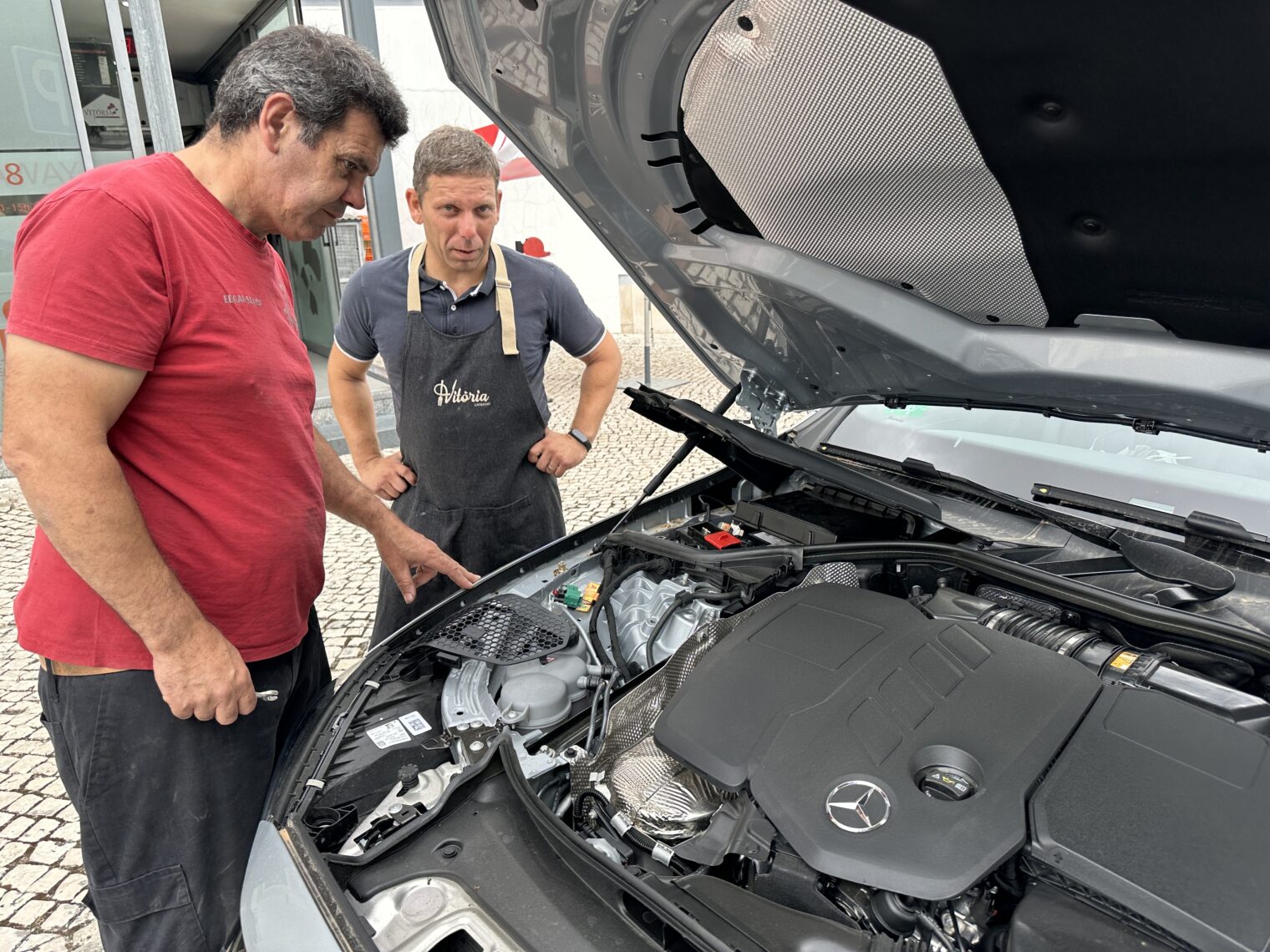
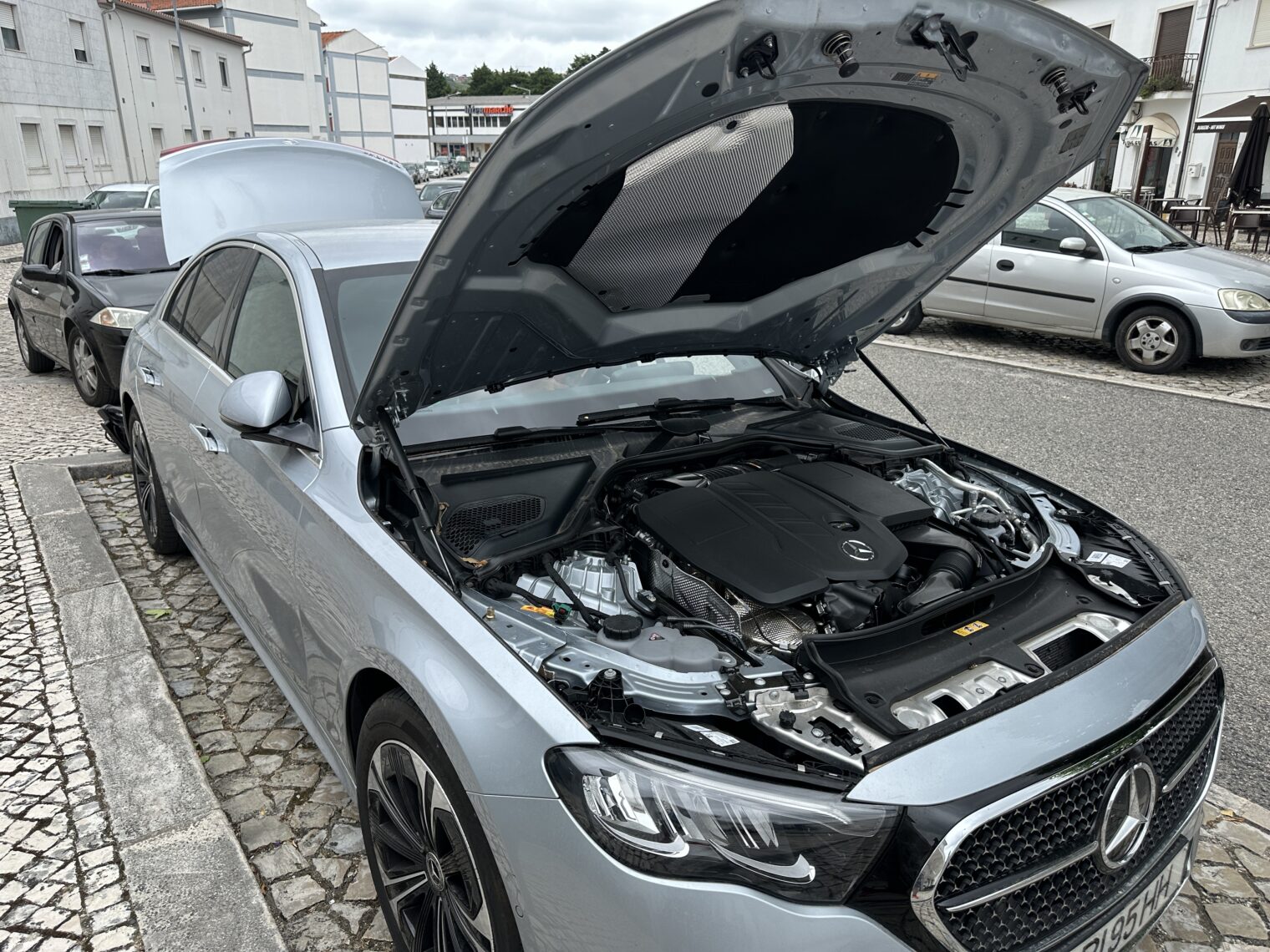
Here’s to the dads who work Sundays and holidays to make life better for their families!
(The tow truck guy waved away a 20 euro tip (this is enough for a sit-down meal for two here). We ate at the restaurant last night and for an early lunch today while waiting for the tow truck.)
Full post, including comments